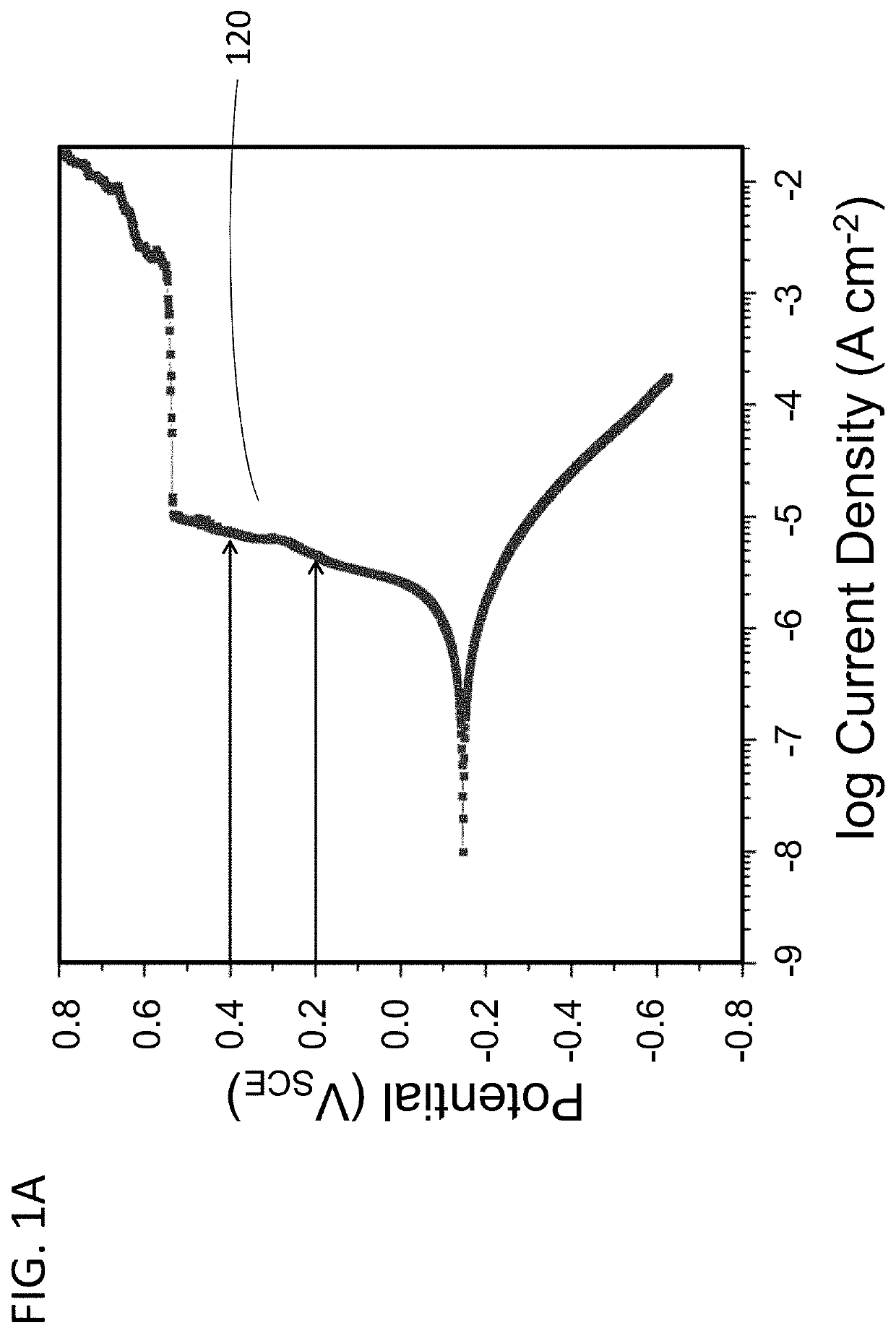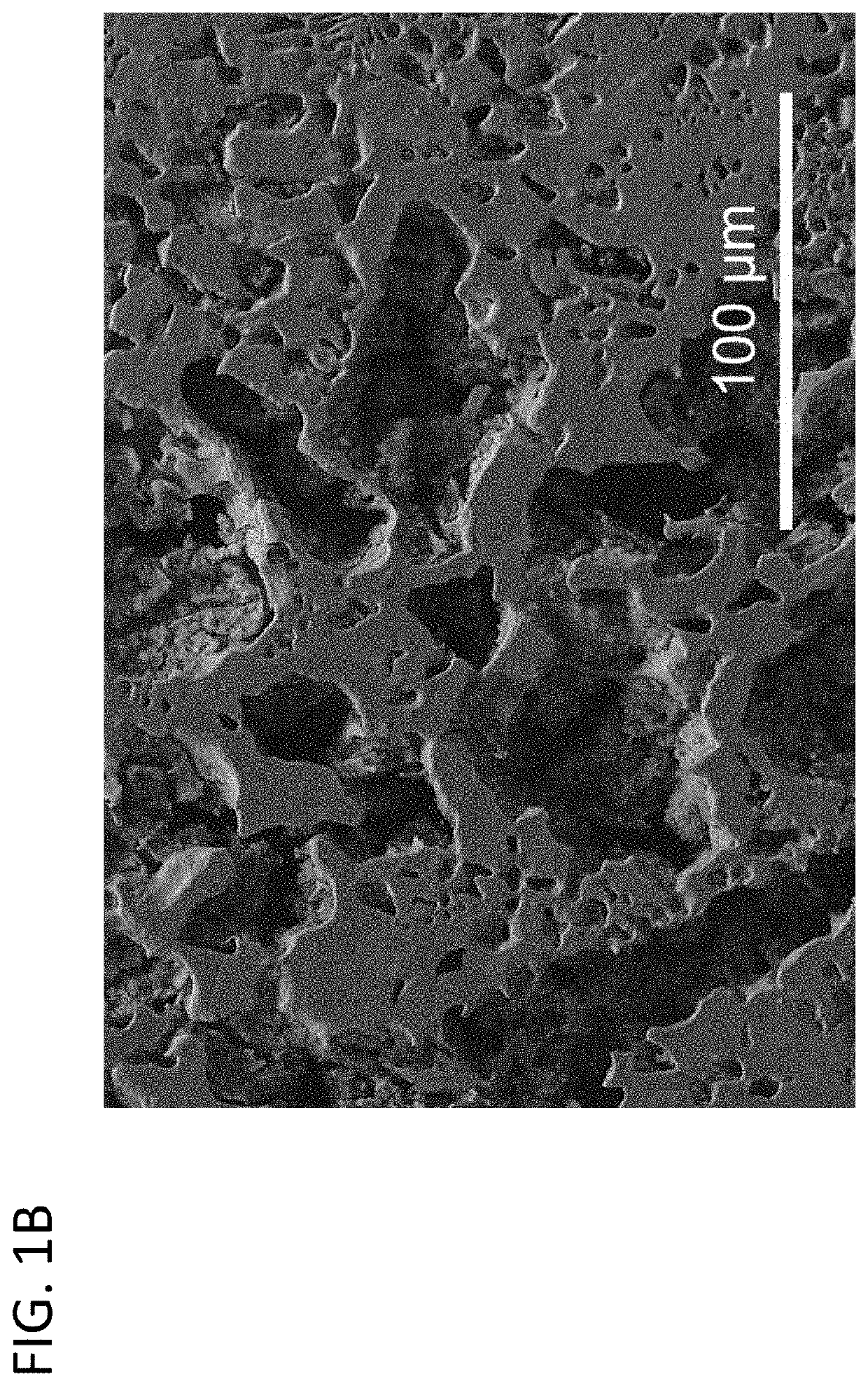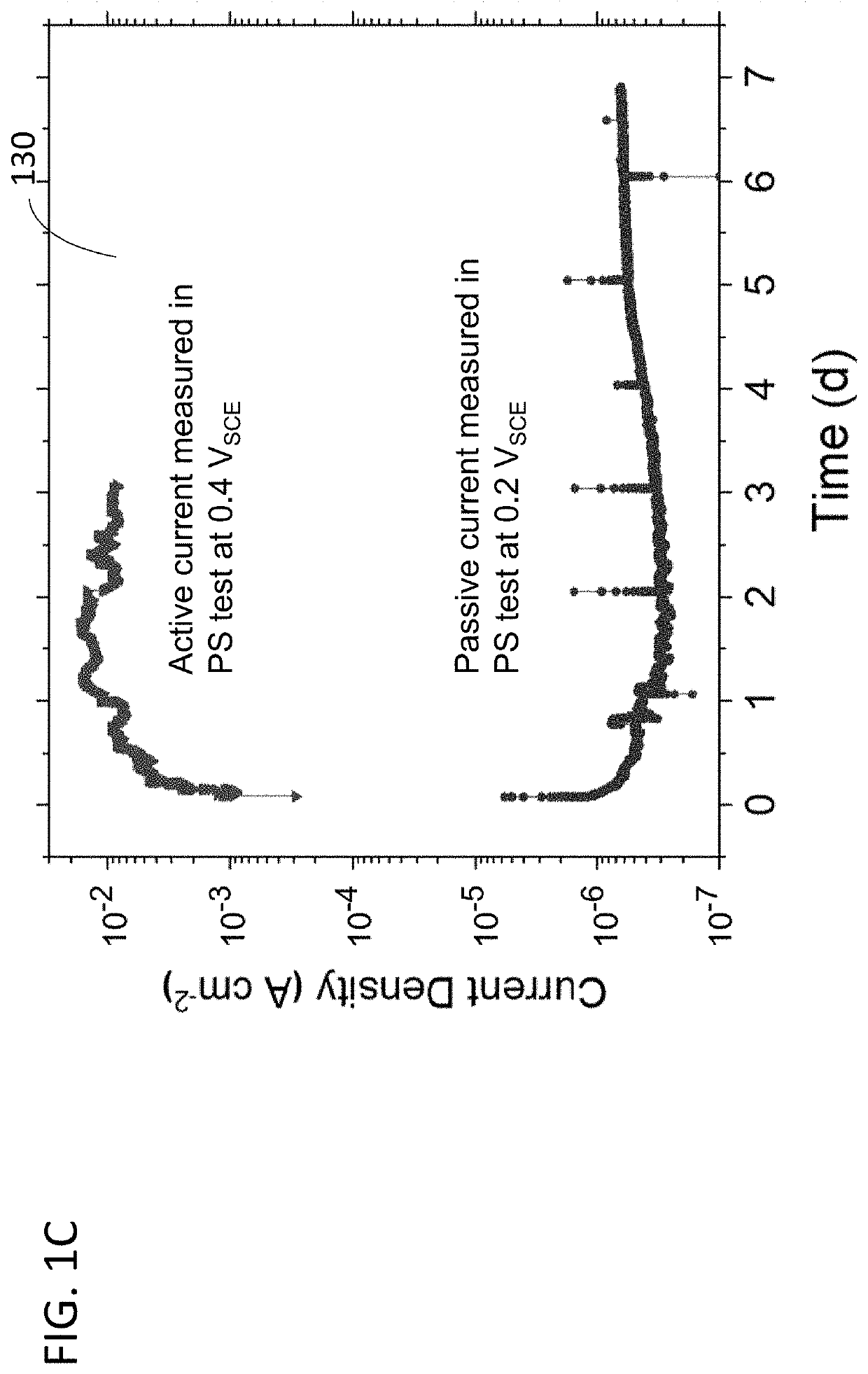Electrochemical corrosion under controlled redox conditions
a technology of electrochemical corrosion and redox conditions, applied in weather/light/corrosion resistance, instruments, nuclear engineering, etc., can solve problems such as deterioration of mechanical properties, release contaminants that could be hazardous or desirable, and alloys used for pipelines are susceptible to corrosion, so as to improve the reliability of prediction, the effect of reducing the risk of contamination
- Summary
- Abstract
- Description
- Claims
- Application Information
AI Technical Summary
Benefits of technology
Problems solved by technology
Method used
Image
Examples
example
[0176]Waste forms need to be designed to be corrosion resistant when contacted by the range of seepage water compositions likely to occur in a breached waste package throughout the regulated service life of a disposal facility. The chemistries of those seepage waters will be affected by container corrosion products, radiolysis, and the range of corrosion products generated during the degradation of backfill materials, neighboring waste forms, and the waste form itself. In the US, generic disposal systems constructed in granitic, argillite, and salt formations must be evaluated for the possible co-disposal of glass, glass / ceramic, and metal waste forms with directly-disposed spent fuel. This requires that the degradation behaviors of waste forms in a wide range of possible seepage water compositions be considered during the design of the waste forms and other EBS components.
[0177]The phases formed in an alloy waste form depend on the compositions and relative amounts of cladding, fue...
PUM
| Property | Measurement | Unit |
|---|---|---|
| current density | aaaaa | aaaaa |
| cathodic voltage | aaaaa | aaaaa |
| pH | aaaaa | aaaaa |
Abstract
Description
Claims
Application Information
 Login to View More
Login to View More - R&D
- Intellectual Property
- Life Sciences
- Materials
- Tech Scout
- Unparalleled Data Quality
- Higher Quality Content
- 60% Fewer Hallucinations
Browse by: Latest US Patents, China's latest patents, Technical Efficacy Thesaurus, Application Domain, Technology Topic, Popular Technical Reports.
© 2025 PatSnap. All rights reserved.Legal|Privacy policy|Modern Slavery Act Transparency Statement|Sitemap|About US| Contact US: help@patsnap.com



